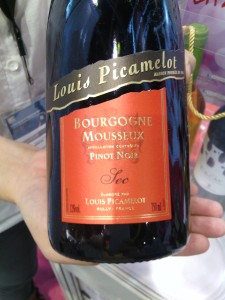
I mentioned the wine in the picture above in the blog entry about sweet wine from Burgundy. This wine is made from lightly botrytised Aligote grapes from Domaine Matrot's vineyards in Meursault. The average age of the vines is 10 years. The grapes are pressed whole in pneumatic presses and the juice is fermented using indigenous yeasts at 5-8 deg C for 15 to 20 weeks. There is no malo-lactic fermentation. The wine is racked once before maturation in bottles for 9 months. I will present this wine at the wine dinner I am organizing for the doctors' association at my hospital. I will match it will a Flamuss au Pommes, a clafoutis-like dessert from Burgundy made with fried apple pieces.

